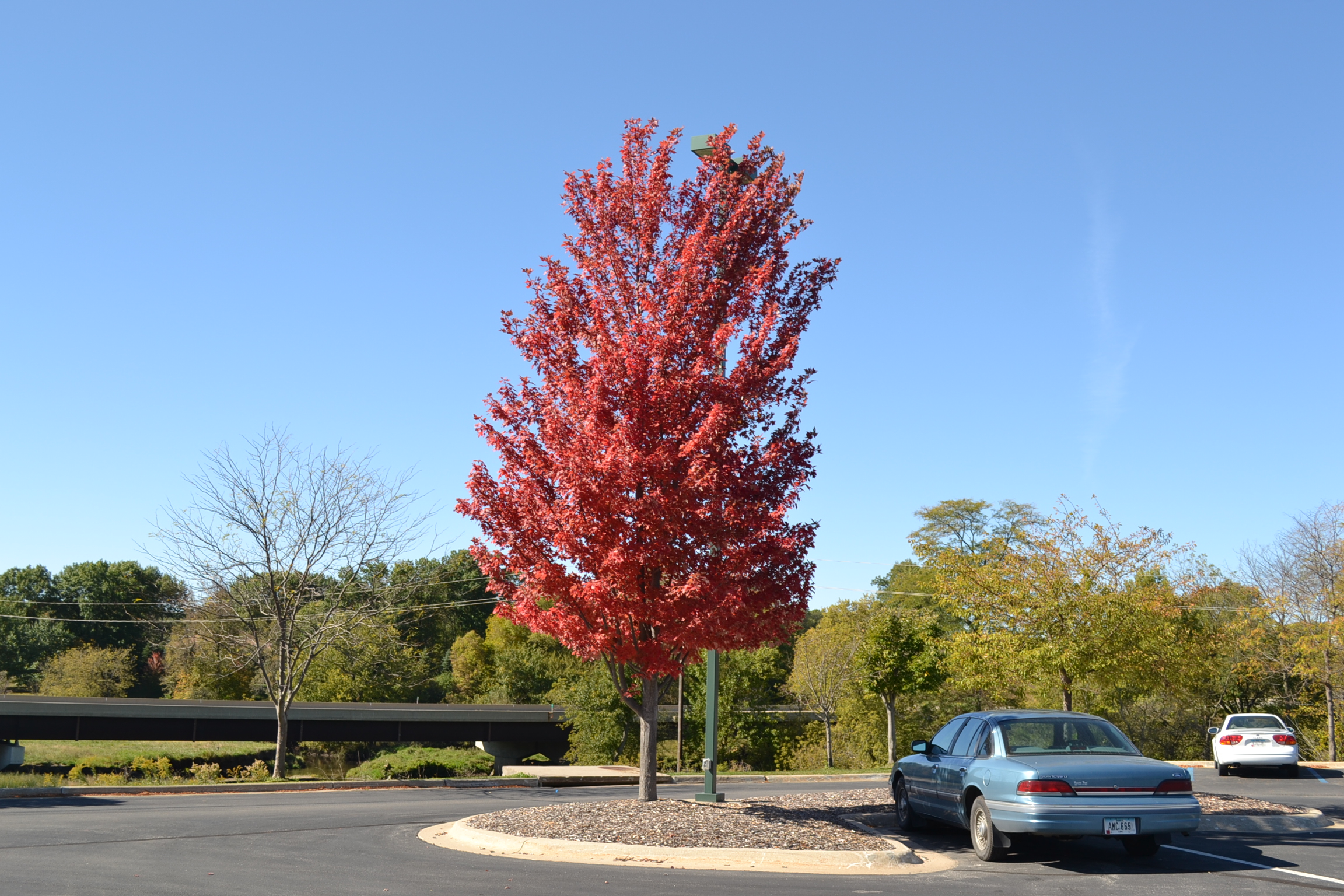Shade trees are a great addition to any landscape. Shade trees can provide beautiful fall color as well as year round interest to your property. One of the biggest benefits of shade trees is that they can reduce your cooling costs in the summer. Installing a shade tree on the south side of your property will block the sun and keep it from hitting your house. This will lower the internal temperature of your home and reduce the need to run your air conditioning. Reducing the amount of time your air conditioner runs, will reduce your electric bill and save you money in the long run.
Choose your shade trees wisely.
Shade trees can be planted for a number of reasons including: form, size and foliage color. It is important to select the right tree for your property, as it will be there for many years to come. We recommend using shade trees that do not have a lot of problems with disease and insects problems. Insects can destroy a tree or make it look unsightly. Ash trees are susceptible to invasion by the emerald ash borer. Once attached by the best, most trees eventually die. Insects can attack the foliage on trees as well. Linden trees are a good example of this, as they are preyed upon by the Japanese beetle. The Japanese beetle eats the foliage of the tree and causes the tree to lose most of its foliage.
Below are a list of shade trees that work well in most zone 5 areas. Some of the trees have great fall color such most maple trees. Oaks will be slower growing, but will be a stronger tree in the long run. River birch will add character with its unique flaking bark.
- Sugar Maple
- Emerald Lustre Maple
- Crimson King Maple
- Red Oak
- Swamp White Oak
- Skyline Honey Locust
- Ginkgo
- River Birch


